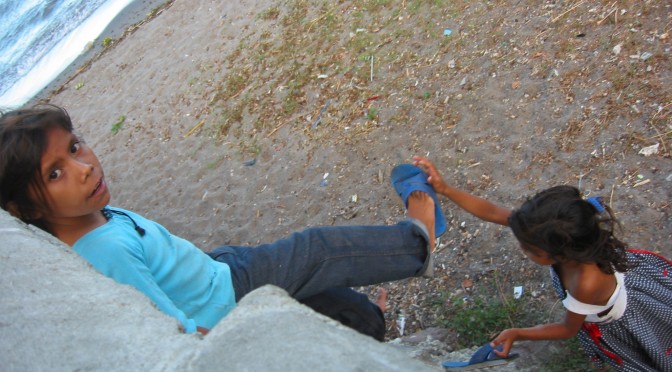When and How Do Babies Become Helpful?
Studies have shown that just seeing an image of a baby excites areas in the brain responsible for speech, movement, empathy, and reward. We adults are hardwired, whether you’re a man or a woman, to come to the aid of a baby. But what about baby, when do they start becoming helpful?
Fascinating research at McMasters University found that 14 month old babies, when danced in sync to music, were far more likely to help their partner afterwards.
The researcher either danced in sync to the music or did not, then later acted out hanging clothes on a line and dropping a clothespin. The babies that were danced in sync to the music most often walked over to the clothespin, picked it up, and handed it to their adult partner. Babies that were danced out of sync to the music actually walked away. You can see clips of the experiment, led by Laura Cirelli, here: http://www.cbc.ca/news/canada/hamilton/news/how-dancing-makes-your-baby-more-helpful-mcmaster-study-1.2686134
Babies start hearing sound as a fetus, deciphering intonation, tone, and rhythm of speech and music around the 20th pre-natal week. A fetus also synchronizes his or her heartbeat to that of their mothers. And as two day old newborns, they are able to listen to rock music and notice if a base beat is missing–they’re born with “beat induction”. Given all this evidence of a drive to synchronize with their caregiver, if they don’t got the groove a baby is gonna figure “it don’t mean a thing if it ain’t got that swing”!
References:
Trainor, L. J. and Cirelli, L. (2015), Rhythm and interpersonal synchrony in early social development. Annals of the New York Academy of Sciences, 1337: 45–52. doi: 10.1111/nyas.12649
Cirelli, L. K., Einarson, K. M. and Trainor, L. J. (2014), Interpersonal synchrony increases prosocial behavior in infants. Developmental Science, 17: 1003–1011. doi: 10.1111/desc.12193
